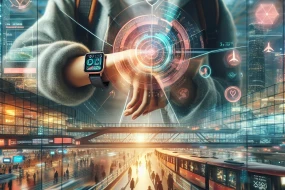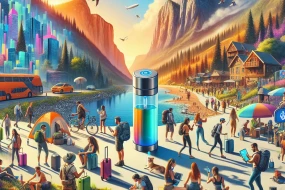
Imagine walking through the ancient ruins of Pompeii, feeling the cobblestones beneath your feet, and hearing the distant chatter of Roman citizens. Thanks to virtual reality, this immersive experience is no longer confined to the realm of imagination. Virtual reality (VR) is revolutionizing how we explore historical sites, offering a blend of education, adventure, and accessibility that was once inconceivable. In this article, we delve into how VR is reshaping historical site tours, the technology behind these transformations, and the potential pitfalls to avoid.
The Rise of Virtual Reality in Historical Tours
Virtual reality has seen exponential growth in recent years, with its applications extending far beyond gaming into fields like education and tourism. Historical site tours are an exciting frontier for VR, as they allow users to experience history in a deeply personal and interactive way. Instead of reading about historical events in textbooks, users can witness them firsthand, creating a lasting impression. This technology is not just a novelty; it’s a powerful tool for learning and engagement. For instance, the British Museum has employed VR to recreate the Bronze Age, providing visitors with a 360-degree view of ancient life.
How VR Enhances Learning and Engagement
One of the most significant advantages of VR in historical tours is its ability to enhance learning. Traditional tours often rely on guides or audio recordings, which, while informative, may not fully engage all visitors. VR, on the other hand, allows for an interactive learning experience. Users can explore different eras, witness historical events, and even interact with virtual characters. This level of engagement not only makes the learning process enjoyable but also aids in better retention of information. Imagine being able to walk through the streets of ancient Athens or stand beside King Tutankhamun’s tomb—these experiences make history come alive in ways that books and lectures simply can't.
Breaking Down Barriers with VR
Virtual reality also breaks down accessibility barriers that have traditionally hindered some people from experiencing historical sites. Physical limitations, financial constraints, and geographical distances can prevent many from visiting these sites in person. VR democratizes access to history, allowing anyone with a headset to explore the Great Wall of China or the Pyramids of Giza from their living room. This accessibility is particularly beneficial for educational institutions, as it provides students with opportunities to explore global heritage sites without the associated costs and logistics of international travel.
Real-World Applications and Success Stories
Several organizations and museums are already implementing VR technology with great success. The Anne Frank House in Amsterdam offers a VR tour that provides an intimate glimpse into the Secret Annex where Anne and her family hid during World War II. This tour has been praised for its emotional impact and educational value. Similarly, the Roman Forum VR app allows users to explore one of Rome’s most iconic sites with a level of detail and context that is often missed in traditional tours. These examples illustrate VR's potential to transform our understanding of history and culture.
Common Mistakes to Avoid in VR Historical Tours
While VR offers incredible opportunities, there are common pitfalls to avoid.
1) Over-reliance on technology can detract from the authenticity of the experience. It's crucial to balance virtual elements with accurate historical representation.
2) Poorly designed VR experiences can lead to motion sickness, which can quickly turn an exciting tour into an uncomfortable ordeal.
3) Failing to update content can make VR experiences feel stale and outdated.
4) Ignoring accessibility features can exclude users with disabilities.
5) Overloading users with information can be overwhelming; it's important to curate content effectively.
6) Not providing adequate user instructions can lead to frustration.
7) Technical glitches can interrupt the immersive experience, so it's essential to ensure that the technology is reliable.
8) Focusing too much on the visuals without a compelling narrative can result in a shallow experience.
9) Neglecting sound design can diminish the sensory immersion.
10) Finally, not considering user feedback can prevent improvements and innovations.
The Future of VR in Historical Tours
As VR technology continues to evolve, its applications in historical site tours are likely to expand. Future developments could include more interactive elements, such as the ability to participate in historical events or interact with AI-driven historical figures. Enhanced sensory experiences, such as haptic feedback, could further deepen the sense of immersion. Additionally, as VR becomes more integrated with augmented reality (AR), we may see hybrid experiences that blend the physical and virtual worlds, offering even richer educational and cultural opportunities.































